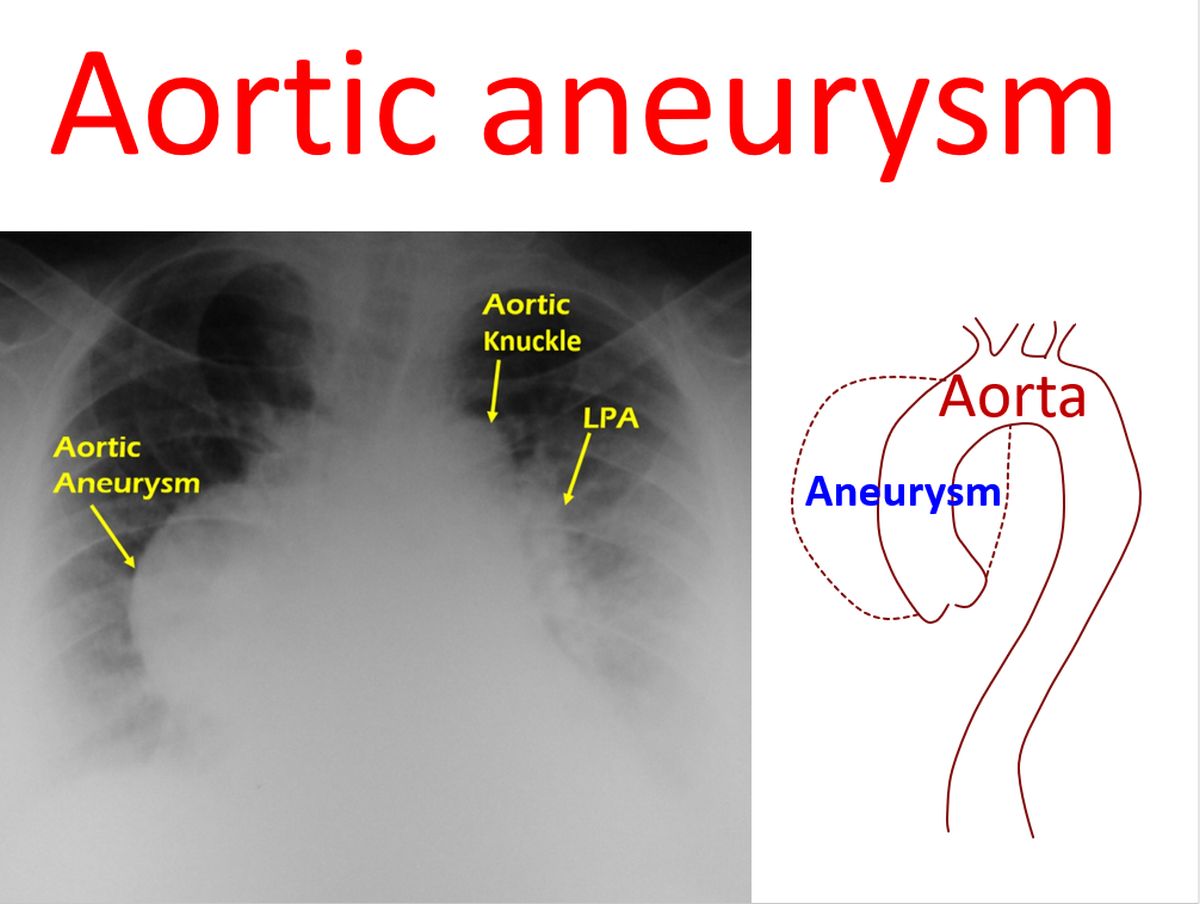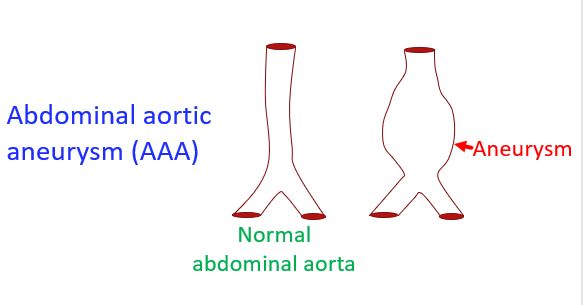Aortic aneurysm
Aortic aneurysm
Aortic aneurysm is a localized enlargement of the aorta. Aorta is the largest blood vessel in the body carrying oxygenated blood. Enlargement of the aorta carries a risk of rupture and fatal bleeding. Symptoms of aortic aneurysm could be due to local pressure effects and sometimes due to migration of clots from within it. Breaks may form in the inner lining of the aorta and is known as aortic dissection. In aortic dissection, blood seeps into the wall of the aorta and may spread across its length. This can block the opening of the major branches.

Rupture of an aortic aneurysm is most often catastrophic due to sudden loss of a lot of blood. Pain in the region of the aneurysm, breathing difficulty, low blood pressure, loss of consciousness and difficulty in swallowing may be some of the manifestations. Of course, these symptoms can have many other causes as well. Very rarely, if the rupture is into the food pipe, vomiting of blood can occur. Partial rupture which is sealed off by surrounding tissue can produce pain in the region of the aneurysm. Aneurysm can occur in the chest or tummy, producing localised pain and prominent pulsations if it is very large.

A large aortic aneurysm can be felt as a bulge in the tummy. Abdominal aortic aneurysm is often called by the short from AAA or triple A. It is increasingly common as age advances. Usual causes for aortic aneurysm are similar to those of blood vessel disease elsewhere like in case of heart attack and stroke. High blood pressure contributes to more rapid enlargement of an aneurysm. Some cases may occur after injury to the aorta as in motor accidents. There are also genetic conditions which weaken the wall of the aorta.
Smoking is an important risk factor for aortic aneurysm. It can also increase the chance of rupture. Abdominal aortic aneurysms are more common in males and in those who have a family history. Occasionally inflammatory disease of the aorta known as aortitis and infections may cause aneurysms. Preventive measures include quitting smoking, eating a healthy diet with fruits, vegetables, fish and whole grains. Saturated fat and trans fat intake should be limited. Salt intake should also be curtailed. Moderate exercise of at least 150 minutes a week is useful in preventing diseases of blood vessels. Starting exercise program at an older age should be only after a medical check up.
Simple and easily available test to detect an abdominal aortic aneurysm is an ultrasound scan. More advanced tests are computed tomographic (CT) scan and magnetic resonance imaging (MRI). It may be desirable to screen for AAA in those above 65 years, especially in male smokers and in those with a family history. In case of aortic aneurysm in the chest, echocardiography may be able to detect some of them. Echocardiography is ultrasound imaging of the heart. Gross enlargements can be picked up by a simple X-ray of the chest. CT and MRI scans of the chest are useful in giving more details about the size and exact location of aneurysms to guide specific treatment.



